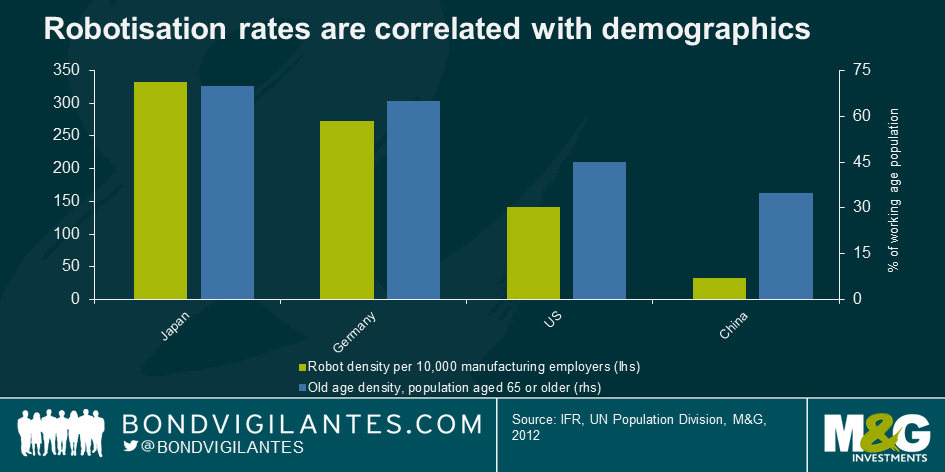“We need to hike…so that we have room to cut if we need to”. Eh? And some robot stuff too.
I keep hearing the argument that the Fed needs to hike, so that if the US economy slows down again it will have room to cut rates once more. In other words it needs to get away from the zero bound so that the traditional monetary policy tool of rate cutting comes back into play in the future. In less cerebral moments I may have made this argument myself, but I’m struggling to remember why it might be a good idea. Surely for this to make sense you’d have to argue that a, say, 50 bps hike from 0.25% to 0.75% is less powerful in slowing the economy than a 50 bps cut from 0.75% to 0.25% is in stimulating it? Or believe that hiking rates is a sign of confidence in the economy and is therefore stimulative (on the other hand a later emergency cut back down from 0.75% if growth stalled might not send the best signal either). I don’t know – does the “hike so that you can cut” argument make any sense?
Next up, your robot digest. You can’t move for robot stories on Twitter at the moment. There’s lumbersexual Google forest-running robot, and Erica, a realistic looking android from Japan who has been made even more humanistic by saying “hmmmm” and frowning if she doesn’t have a proper answer in her data chips to answer your questions. We have Martin Ford’s new book, The Rise of the Robots, out in a couple of weeks, and to counter all the “robots are stealing our jobs” stories, Deloitte has published a study showing that technology is a “job creating machine” increasing spending power and demand in the economy. But whilst the headlines are obsessed with the “humanisation of robots”, more scary is the “robotisation of humans”. The negative headlines that Amazon received this week about its working practices as a result of a New York Times article lead me to this horrifying Mother Jones article from 2012, “I was a Warehouse Wage Slave”.
Talking of the rate of robotisation, here’s a chart showing the number of robots per 10,000 manufacturing humanoid employees. You can see that Japan leads the way in the large economies with a 2012 robot density of 332, Germany isn’t far behind, but the US and especially China have much lower densities. On the same chart I have put forecast demographic dependency ratios – in other words the retired as a percentage of people of working age by 2035. You can see that there’s a decent relationship. Is robot building driven by future expected working population declines? The UK population is growing, largely from immigration (+500,000 in 2014, more than half of which was net migration). Perhaps the well discussed productivity weakness in the UK is due to our low robotisation rate, which in turn comes from our high labour force growth relative to those countries with more robots?
Finally a summer book recommendation for you. I hadn’t read any geeky sci-fi for some time, but Ready Player One by Ernest Cline – set in a future obsessed by 1980s popular culture (computer games, music) – is brilliant. I’d recommend some good new music too, but that hasn’t been any so far in 2015. Not one bar of it. Hang on, maybe the Hookworms LP came out this year…*checks*…nope, 2014, as you were.
The value of investments will fluctuate, which will cause prices to fall as well as rise and you may not get back the original amount you invested. Past performance is not a guide to future performance.


18 years of comment
Discover historical blogs from our extensive archive with our Blast from the past feature. View the most popular blogs posted this month - 5, 10 or 15 years ago!


Bond Vigilantes
Get Bond Vigilantes updates straight to your inbox






